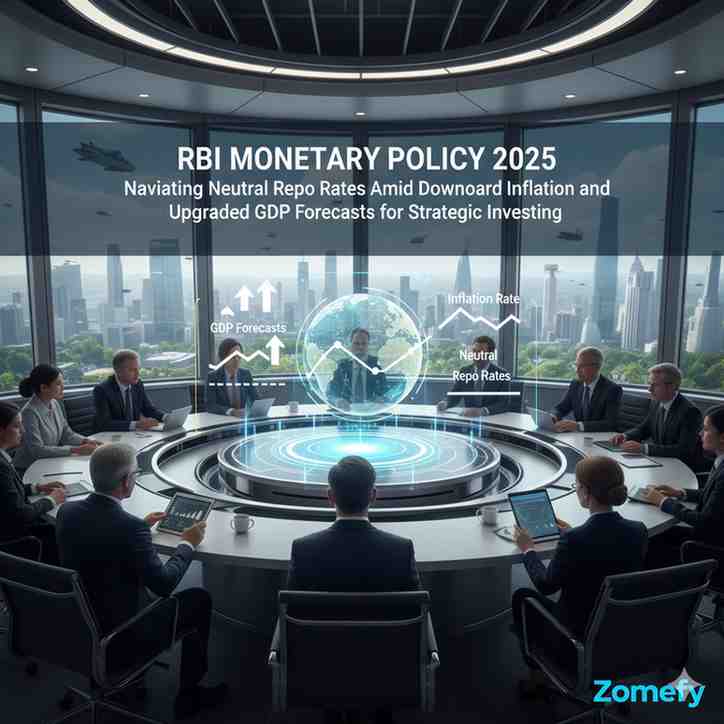FII and DII Flow Dynamics in 2025: How Foreign and Domestic Investment Patterns Are Reshaping Indian Market Valuations and Sectoral Performance
The Indian equity market landscape in 2025 is witnessing a significant transformation shaped by the evolving dynamics between Foreign Institutional Investors (FIIs) and Domestic Institutional Inves...
FII and DII Flow Dynamics in 2025: How Foreign and Domestic Investment Patterns Are Reshaping Indian Market Valuations and Sectoral Performance
What You Can Do Next
- Read the full article for complete insights
- Save for later reference
- Share with others learning about this topic
Image not available
The Indian equity market landscape in 2025 is witnessing a significant transformation shaped by the evolving dynamics between Foreign Institutional Investors (FIIs) and Domestic Institutional Investors (DIIs). Amid global economic uncertainties and shifting geopolitical scenarios, FIIs have been retreating from Indian secondary markets, paring down holdings to a 15-year low, while simultaneously showing selective interest in primary markets such as IPOs. Conversely, DIIs have emerged as the dominant force driving market valuations and sectoral performance, buoyed by robust inflows from mutual funds, insurance companies, banks, and retail participation via systematic investment plans (SIPs). This shift marks a watershed moment in India’s capital market history, reflecting a maturation of domestic financial ecosystems and changing investor confidence. In this detailed analysis, we explore the flow patterns of FIIs and DIIs in 2025, dissect their impact on market valuations and sectoral trends, and offer actionable insights for retail investors and financial professionals navigating this evolving environment.
FII and DII Flow Trends in 2025: Overview and Market Impact
2025 has seen a clear divergence in investment patterns between Foreign Institutional Investors (FIIs) and Domestic Institutional Investors (DIIs). FIIs have reduced their exposure in India’s secondary equity markets significantly, with net outflows reaching approximately ₹1.46 lakh crore year-to-date and ownership in NSE-listed companies falling to a 15-year low of 16.9% as of September 2025. This decline reflects global risk aversion, sector rotation away from Indian IT stocks, and macroeconomic concerns abroad. In contrast, DIIs have stepped in as strong buyers, with net inflows exceeding ₹5 lakh crore in 2025, driven by mutual funds, insurance companies, banks, and increasing retail participation through SIPs. DIIs’ ownership has risen to 18.7%, surpassing FIIs for the fourth consecutive quarter, marking a historic shift in market control.
This shift has stabilized Indian markets amid FII volatility and contributed to selective sectoral outperformance. Sectors like financial services, FMCG, healthcare, and select tech segments have benefited from DII buying. Meanwhile, FIIs have selectively invested in primary markets, participating aggressively in IPOs with investments of ₹10,700 crore in November alone, indicating confidence in India’s growth story despite secondary market exit pressures.
Investor Category | 2025 Net Flow (₹ Crore) | Ownership in NSE-listed Companies (%) | Key Investment Focus |
|---|---|---|---|
| FIIs | -1,46,000 (YTD) | 16.9 (Sep 2025) | Primary Market IPOs, Select Small-cap Tech |
| DIIs | +5,00,000 (YTD) | 18.7 (Sep 2025) | Financials, FMCG, Healthcare, Select Tech |
This evolving dynamic is reshaping market valuations and sectoral leadership, offering new opportunities and risks for investors.
FII Selling Pressure and Sectoral Rotation
Foreign Institutional Investors have been net sellers in the secondary market throughout 2025, with a cumulative offloading of nearly ₹2 lakh crore. The Information Technology sector bore the brunt, with FII allocation dropping by 1.25 percentage points quarter-on-quarter to a record low of 7.9% in Q2FY26. This marks the third consecutive quarterly decline and a cumulative reduction of 6.6 percentage points over 15 quarters, reflecting global tech sector rotation and concerns over rising interest rates and geopolitical risks.
However, FIIs have maintained or increased stakes in niche small-cap technology stocks such as Cartrade Tech and Ixigo, where they hold over 60% stakes, indicating a selective, conviction-driven approach rather than broad market participation.
Sector | FII Ownership (%) Q1FY26 | FII Ownership (%) Q2FY26 | QoQ Change (bps) |
|---|---|---|---|
| Information Technology | 9.15 | 7.90 | -125 |
| Financial Services | 18.5 | 18.7 | +20 |
| Consumer Discretionary | 11.3 | 12.7 | +140 |
| Energy | 7.2 | 7.0 | -20 |
This selective selling and sectoral rotation highlight FIIs’ cautious stance but underlying confidence in India’s consumption and financial sectors.
DII Buying Momentum and Sectoral Preferences
Domestic Institutional Investors have emerged as the market's anchor in 2025, with net purchases of over ₹5 lakh crore year-to-date. This buying spree has been supported by:
- Mutual Funds: Record monthly inflows via SIPs, with July alone witnessing ₹42,702 crore inflows. - Insurance Companies and Banks: Strategic accumulation in fundamentally strong sectors. - Retail Investors: Increased participation through demat accounts, reaching 200 million as of mid-2025.
DIIs have focused on sectors with strong domestic demand and robust balance sheets, such as financial services, FMCG, healthcare, and select technology companies. This has supported market valuations and contributed to market stability amid FII volatility.
Sector | DII Net Buying (₹ Crore) 2025 YTD | Performance Impact (Nifty Sector Index % Chg YTD) |
|---|---|---|
| Financial Services | ₹1,20,000 | +18.5% |
| FMCG | ₹85,000 | +12.3% |
| Healthcare | ₹45,000 | +15.2% |
| Information Technology (select stocks) | ₹25,000 | +8.7% |
This selective DII buying has cushioned the market from FII outflows and contributed to a more resilient market structure.
Impact on Market Valuations and Sectoral Performance
The contrasting flows of FIIs and DIIs have contributed to differentiated valuation trends across sectors and companies in 2025. The withdrawal of FIIs from certain sectors, particularly IT, has led to compressed valuations, whereas strong DII participation in sectors like financial services and FMCG has supported premium valuations and stable earnings growth.
A comparative valuation snapshot of key sectors as of Q3 2025 demonstrates this divergence:
Sector | Average P/E Ratio | Average P/B Ratio | Dividend Yield (%) | YTD Return (%) |
|---|---|---|---|---|
| Financial Services | 24.8 | 3.5 | 1.8 | 18.5 |
| FMCG | 30.2 | 12.1 | 1.7 | 12.3 |
| Information Technology | 18.5 | 4.2 | 1.5 | 8.7 |
| Consumer Discretionary | 28.4 | 5.3 | 1.2 | 14.0 |
The lower P/E in IT reflects FII selling pressure, while the higher valuations in financials and FMCG underscore DII-driven demand. This divergence offers tactical opportunities:
- Investors seeking growth at reasonable valuations may consider IT stocks showing strong fundamentals but temporarily depressed multiples. - Long-term investors can benefit from the stability and dividend income offered by financial and FMCG sectors favored by DIIs.
Furthermore, the growing domestic investor base and SIP inflows are expected to sustain demand for fundamentally strong companies, supporting market resilience against global uncertainties.
Company-Level Performance Comparison
Examining marquee Indian companies illustrates the impact of FII and DII flows on individual stock performance and valuations. Consider the following comparison of Reliance Industries and TCS, two large-cap stalwarts with differing investor flow dynamics:
Company | Market Cap (₹ Cr) | P/E Ratio | ROE (%) | Debt/Equity | YTD Return (%) |
|---|---|---|---|---|---|
| Reliance Industries | 15,45,230 | 24.5 | 8.2 | 0.35 | 16.8 |
| TCS | 12,85,450 | 28.3 | 42.1 | 0.05 | 7.5 |
Reliance Industries has attracted strong DII interest due to its diversified business model and robust cash flows, reflected in a moderate P/E and solid returns. TCS, heavily impacted by FII selling in IT, shows a higher P/E but lower YTD returns, highlighting valuation pressure despite strong fundamentals.
Actionable insights:
- Retail investors should monitor institutional ownership trends as a proxy for sentiment and potential price support. - Diversifying across sectors with varying FII/DII flow patterns can optimize risk-adjusted returns.
Practical Investment Strategies and Risk Considerations for 2025
The evolving FII-DII dynamics in 2025 necessitate a nuanced approach to portfolio construction for Indian retail investors and financial professionals. Key actionable strategies include:
- Leverage DII Strength: Focus on sectors where DIIs have demonstrated sustained buying, such as financial services, FMCG, and healthcare, to benefit from stable institutional support. - Identify FII Contrarian Opportunities: Select IT and technology stocks that have been sold off by FIIs but exhibit strong fundamentals and growth potential. - Monitor IPO Participation: FIIs’ aggressive primary market buying suggests IPOs can be attractive entry points, especially in sectors aligned with India’s growth story. - Diversify Across Market Caps: Increased retail interest in mid and small caps (ownership at 19-year highs) provides avenues for higher growth but requires careful risk management.
Risk considerations include:
- Volatility from FII Flows: Sudden changes in global risk appetite can trigger swift FII outflows, impacting sectors disproportionately. - Regulatory and Macroeconomic Risks: Domestic reforms and geopolitical developments may affect sectoral performance and investor sentiment. - Valuation Risks: Premium valuations in DII-favored sectors could lead to corrections if earnings growth disappoints.
A risk-return comparison of key sectors is summarized below:
Sector | Annualized Volatility (%) | Sharpe Ratio | Dividend Yield (%) |
|---|---|---|---|
| Financial Services | 22.5 | 1.15 | 1.8 |
| FMCG | 18.3 | 1.25 | 1.7 |
| Information Technology | 25.7 | 0.95 | 1.5 |
| Consumer Discretionary | 21.0 | 1.10 | 1.2 |
In conclusion, understanding and adapting to the FII-DII flow dynamics will be crucial for investment success in 2025. Retail investors and professionals should combine macro-level flow analysis with company- and sector-level fundamentals to build resilient portfolios.
Pros and Cons of FII and DII Investment Patterns
Pros | Cons |
|---|---|
| FIIs bring global expertise and liquidity | FIIs prone to sudden sell-offs increasing volatility |
| DIIs provide stable, long-term investment support | DIIs may herd in popular sectors leading to valuation bubbles |
| DIIs’ retail inflows diversify market participation | Retail investors may lack sophistication, increasing susceptibility to market swings |
| FII IPO participation supports new listings and market depth | FII exit from secondary markets can depress prices temporarily |
Investors must balance these factors to optimize portfolio resilience and growth potential.
Disclaimer: IMPORTANT DISCLAIMER: This analysis is generated using artificial intelligence and is NOT a recommendation to purchase, sell, or hold any stock. This analysis is for informational and educational purposes only. Past performance does not guarantee future results. Please consult with a qualified financial advisor before making any investment decisions. The author and platform are not responsible for any investment losses.
Continue Your Investment Journey
Discover more insights that match your interests

Kalshi Prediction Markets 2025: New Frontiers for Retail Investors
Kalshi, a US-based prediction market platform valued at approximately $5 billion, represents a transformative opportunity for Indian retail investors seeking exposure to event-based trading and fin...

RBI Monetary Policy 2025: Navigating Neutral Repo Rates Amid Downward Inflation and Upgraded GDP Forecasts for Strategic Investing
The Reserve Bank of India (RBI) has maintained a neutral stance on monetary policy in 2025, holding the repo rate steady at 5.

Federal Bitcoin Reserve 2025: Implications for Indian Investors
The Federal Bitcoin Reserve (FBR) initiative, anticipated to be operational by 2025 following recent U.

Nifty and Sensex Performance 2025: Leveraging Sectoral Rotation and Global Market Influences for Strategic Gains
The year 2025 marks a pivotal phase for Indian equity markets, with the Nifty 50 and BSE Sensex navigating through complex dynamics shaped by sectoral rotations and global market influences.
Explore More Insights
Continue your financial education journey
